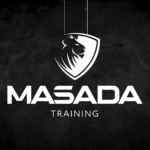Introduction
Krav Maga, the official hand-to-hand combat system of the Israeli Defense Forces, has come a long way from its humble beginnings on the tough streets of Bratislava, Czechoslovakia. Developed by Imi Lichtenfeld to protect the Jewish community from anti-Semitic attacks, this martial art has transformed into a global phenomenon, changing lives and providing practical self-defense techniques to thousands of individuals. Let’s take a journey through the history of Krav Maga and how it evolved into the world-renowned system, it is today.
Krav Maga: The Origins and Early Development
Imi Lichtenfeld, born in 1910 in Budapest, grew up in Bratislava, where his father, a police officer and self-defense instructor, trained him in boxing, wrestling, and gymnastics. As anti-Semitic riots threatened his community, Imi adapted his competition-based fighting knowledge into a real-world self-defense system. In 1940, he fled to Palestine, joined the Haganah, and was tasked with developing a self-defense system for the Israeli military.
Thus, Krav Maga was born, and with it, a strong following of special unit leaders, armed forces professionals, and police officers. Lichtenfeld’s revolutionary approach combined techniques from aikido, judo, karate, boxing, and wrestling, focusing on practicality and efficiency in real-world situations.
Krav Maga’s Expansion and Adaptation
As Lichtenfeld expanded the IDF School of Combat Fitness, the popularity of Krav Maga grew, attracting students from all walks of life. He adapted the system to suit civilians, including women and children, allowing them to learn self-defense techniques to protect themselves effectively. The emphasis on simplicity, simultaneous defense, and attack, and aggression made Krav Maga an empowering choice for self-defense.
Krav Maga Worldwide: A Global Movement
One of Lichtenfeld’s students, Darren Levine, played a crucial role in introducing Krav Maga to Los Angeles, where he established Krav Maga Worldwide. Building on Lichtenfeld’s principles, the organization provided accessible and approachable training for Los Angeles citizens seeking to enhance their self-defense skills and physical fitness.
Krav Maga’s Global Impact
The impact of Krav Maga spread beyond Los Angeles, reaching other parts of the United States and countries worldwide. Its effectiveness, emphasis on real-world situations, and adaptability made it a sought-after self-defense system for law enforcement, intelligence organizations, and civilians alike.
The Fundamentals of Krav Maga
Krav Maga’s core principles focus on practicality, efficiency, and using an opponent’s strength against them. There are no rules in Krav Maga, as it aims to neutralize threats effectively. Training scenarios simulate real-life situations, teaching students to stay focused under stress and use the most straightforward techniques to protect themselves.
Krav Maga Today
Today, Krav Maga continues to evolve and grow. The system incorporates elements from various martial arts, including Muay Thai, Aikido, Judo, Jiu-Jitsu, and boxing. It encompasses hand-to-hand combat and defense against armed attackers, providing practitioners with a comprehensive self-defense methodology.
Elite Training Center, an advocate of Krav Maga, offers a range of classes that complement the system, such as Muay Thai, Kali/Silat, Mixed Martial Arts, Brazilian Jiu-Jitsu, and LOTAR CQC. This approach ensures students have a well-rounded skill set to handle different self-defense situations.
Conclusion
From its origin in the streets of Bratislava to becoming a widely practiced self-defense system across the globe, Krav Maga’s journey has been nothing short of remarkable. Imi Lichtenfeld’s vision of a practical, efficient, and accessible self-defense method has positively impacted countless lives. As Krav Maga continues to evolve and expand, it remains a powerful tool for empowering individuals and enhancing their ability to protect themselves in an increasingly unpredictable world.



